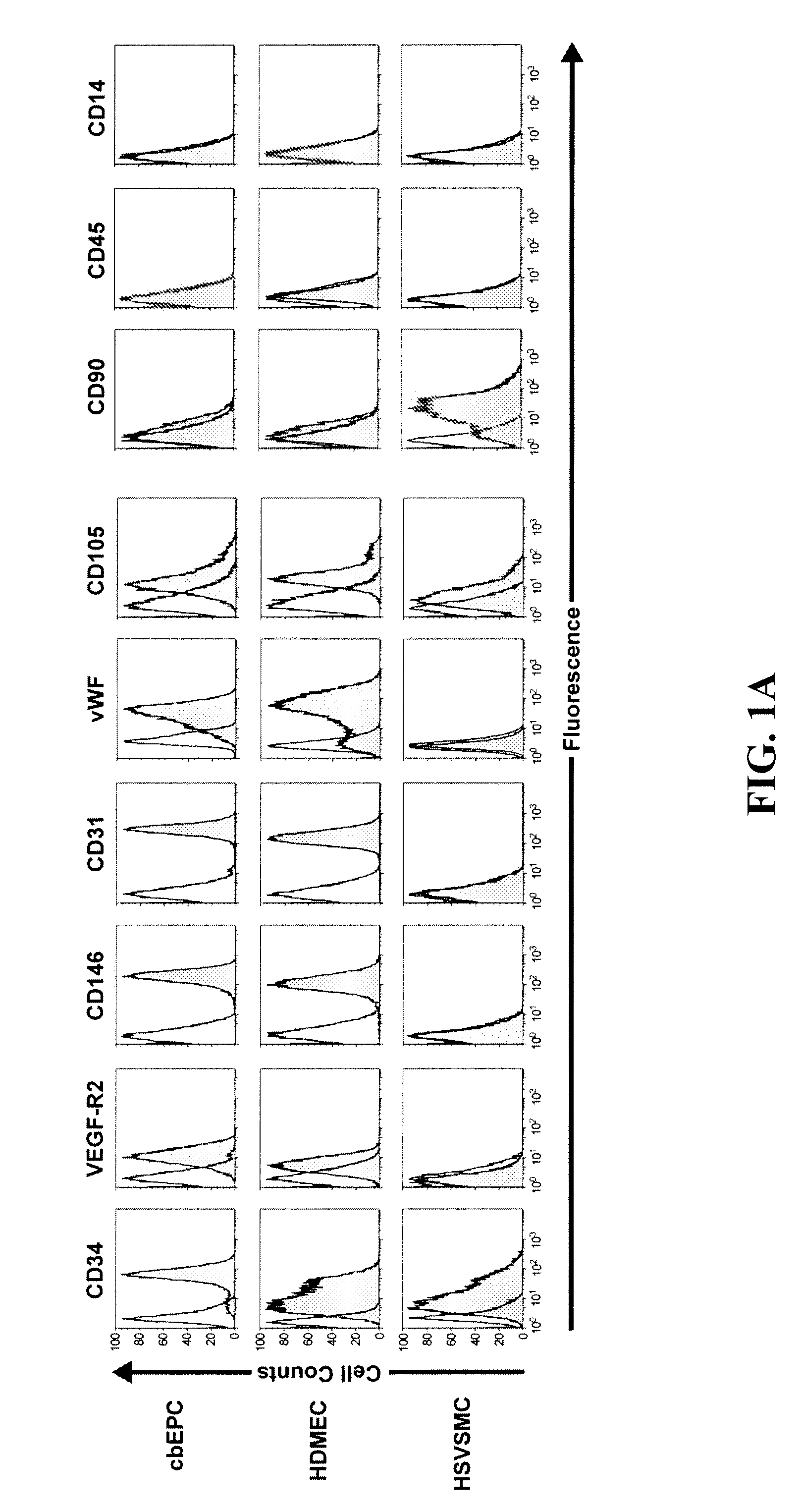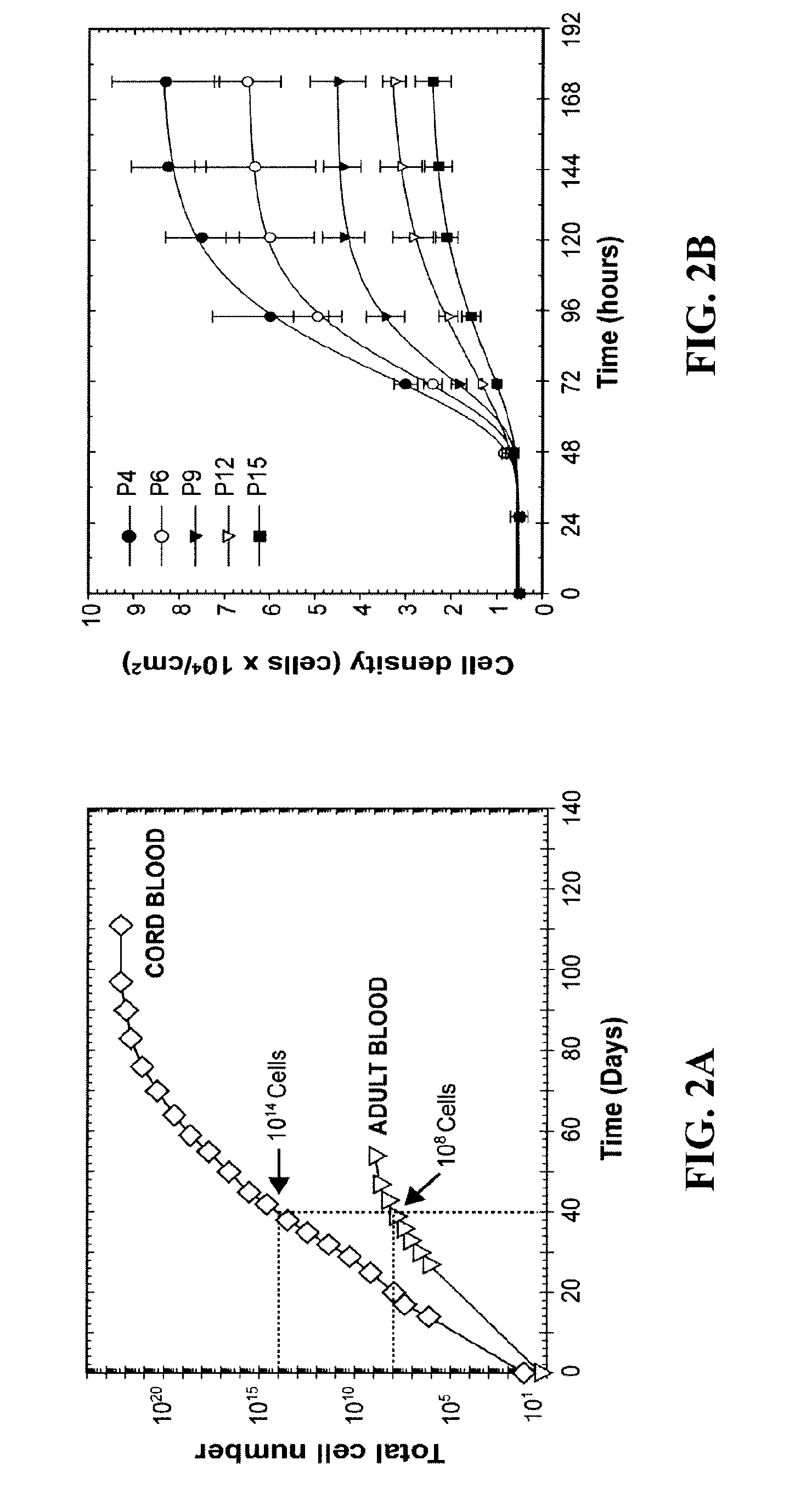Methods for promoting neovascularization
- Summary
- Abstract
- Description
- Claims
- Application Information
AI Technical Summary
Benefits of technology
Problems solved by technology
Method used
Image
Examples
example 1
[0142]In Vivo Vasculogenic Potential of Human Blood-Derived Endothelial Progenitor Cells (EPC).
[0143]Materials and Methods.
[0144]Isolation and culture of blood-derived EPCs—Human umbilical cord blood was obtained from the Brigham and Women's Hospital in accordance with an Institutional Review Board-approved protocol. Adult peripheral blood was collected from volunteer donors in accordance with a protocol approved by Children's Hospital Boston Committee on Clinical Investigation. Both cord blood-derived EPCs (cbEPCs) and adult peripheral blood-derived EPCs were obtained from the mononuclear cell (MNC) fractions similarly to other authors (Ingram D A, et. al., Blood. 2004,104:2752-60; Lin Y, et. al., J Clin Invest. 2000,105:71-77; Yoder M C, et. al., Blood. 2006, 109:1801-9). MNCs were seeded on 1% gelatin-coated tissue culture plates using Endothelial Basal Medium (EBM-2) supplemented with SingleQuots (except for hydrocortisone) (Cambrex BioScience, Walkersville, Md.), 20% FBS (Hyclo...
example 2
[0171]Engineering Vascular Networks In Vivo with Human Postnatal Progenitor Cells Isolated From Blood and Bone Marrow.
[0172]Materials and Methods
[0173]Isolation and culture of EPCs—EPCs from human umbilical cord blood and adult peripheral blood were isolated and cultured as described above.
[0174]Isolation and culture of MPCs—bmMPCs were isolated from the MNC fractions of a 25 mL human bone marrow sample (Cambrex Bio Science, Walkersville, Md.). MNCs were seeded on 1% gelatin-coated tissue culture plates using EGM-2 (except for hydrocortisone, VEGF, bFGF, and heparin), 20% FBS, 1× GPS and 15% autologous plasma. Unbound cells were removed at 48 hours, and the bound cell fraction maintained in culture until 70% confluence using MPC-medium: EGM-2 (except for hydrocortisone, VEGF, bFGF, and heparin), 20% FBS, and 1× GPS. Commercially available bmMPCs (Cambrex) were used as control to those isolated in our laboratory. Similarly, cbMPCs were isolated from the MNC fractions of 25 mL human c...
PUM
 Login to View More
Login to View More Abstract
Description
Claims
Application Information
 Login to View More
Login to View More - R&D
- Intellectual Property
- Life Sciences
- Materials
- Tech Scout
- Unparalleled Data Quality
- Higher Quality Content
- 60% Fewer Hallucinations
Browse by: Latest US Patents, China's latest patents, Technical Efficacy Thesaurus, Application Domain, Technology Topic, Popular Technical Reports.
© 2025 PatSnap. All rights reserved.Legal|Privacy policy|Modern Slavery Act Transparency Statement|Sitemap|About US| Contact US: help@patsnap.com



